Lange’s Cascading Beneficiary Plan:
When is Flexible Estate Planning the Best Solution?
Hi all! As we edge closer to Halloween, I want to talk a bit more about something that TRULY TERRIFIES me: bad estate planning. In our scary tale, the villain: Concrete Contract, is trying to trap your beneficiaries into decisions made today—decades prior to your death—based on information and circumstances that will likely be completely different when the time comes to put the estate plan into motion. The devil is in the details, and you don’t want the devil involved!
Luckily, our flexible friend, Lange’s Cascading Beneficiary Plan comes to the rescue! He provides the peace of mind that your beneficiaries will be able to make the best decisions with the facts at hand when the time comes. Once again, flexible estate planning protects the innocent and saves the day!
Ok… Ok… I know that was a little silly. But it is still true. Since the mid-1990s, Lange’s Cascading Beneficiary Plan has been saving beneficiaries from being trapped by decisions made decades in the past when an estate plan was drafted. In my opinion, there is no better option for your estate planning, particularly if your family is not a blended family—more traditional, so to speak. In the accompanying video, I am going to explain my reasons for using this flexible estate plan and describe how it can provide optimal solutions under many circumstances.
As I have touched on before, the biggest problem in estate planning is that we don’t know what is going to happen in the future. We don’t know when we are going to die. We don’t know how much money we’re going to have. We can’t anticipate the future needs of our surviving spouse. We can’t know the needs of the children and grandchildren—or even whether there will be grandchildren. We don’t know what the tax laws are going to be. In point-of-fact, we don’t know what the tax laws are going to be next year much less a couple of decades from now!
A previous blog and video series addressed possible changes in the tax laws regarding retirement plans… and I said then, what I will say now. The best thing that you can do to protect your family from those changes—not knowing what the future holds—is to make sure you have a flexible estate plan. If we lose the ability to stretch an IRA, if inherited IRAs are taxed at an accelerated rate, if tax rates become more unfavorable for your family, then they will need flexibility to make financially sound decisions. Managing the tax impact on your legacy is critical.
What do you need to have Lange’s Cascading Beneficiary Plan work for your family? Trust. For this plan to work well, you absolutely must trust your spouse. This is really important, because after you die, your spouse will have the power to make a lot of critical decisions—hopefully in conjunction with other trusted family members and a trusted advisor, and armed with your wishes too.
Estate planning with cascading beneficiaries is not a new concept, but I put my twist on it making it work particularly well for IRA and retirement plan owners with traditional families. Then, I started calling it Lange’s Cascading Beneficiary Plan. After decades of use, I’ve seen this plan serve my clients very well.
The video goes over the details of how this plan should be set up and how to name beneficiaries. I think it is really critical to get this right, and I want to make sure all my readers do get it right. Flexible estate planning has never been more critical as we stand in the shadow of the Death of the Stretch IRA. Good planning could save your family a lot of worry and a lot of money.
Stop back soon for more on Lange’s Cascading Beneficiary Plan.
Jim
P.S. If you want to do a little advanced study on this topic before the next post and video, go to https://paytaxeslater.com/estate-planning/.




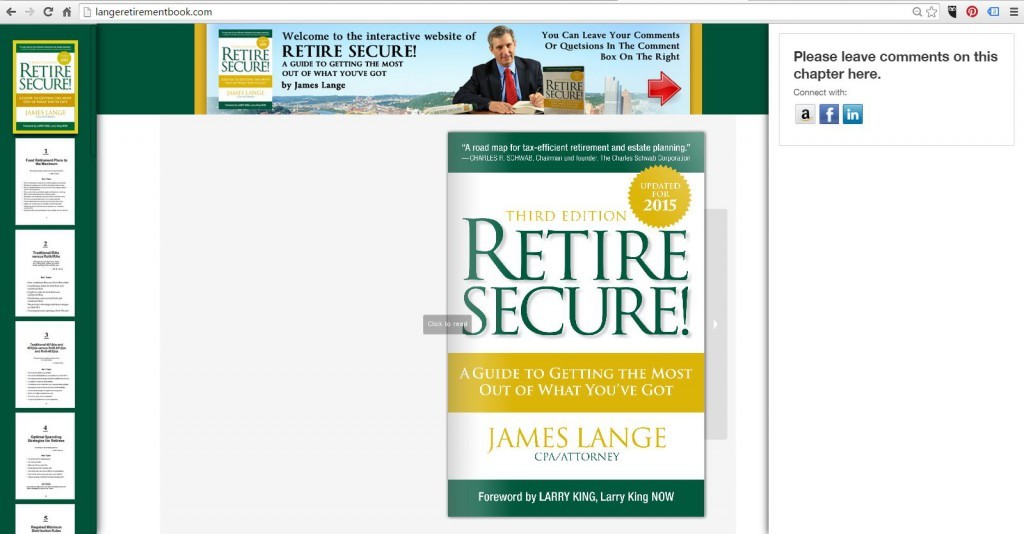
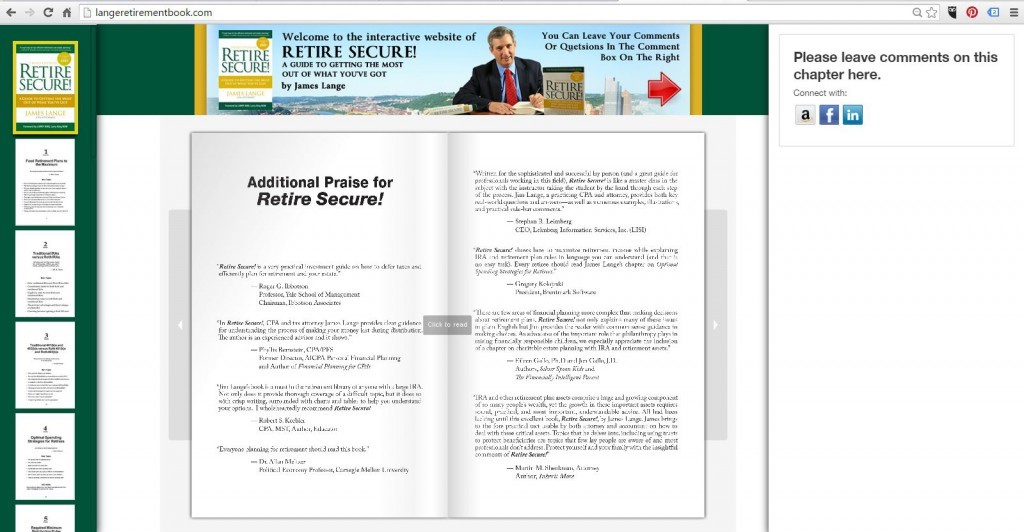
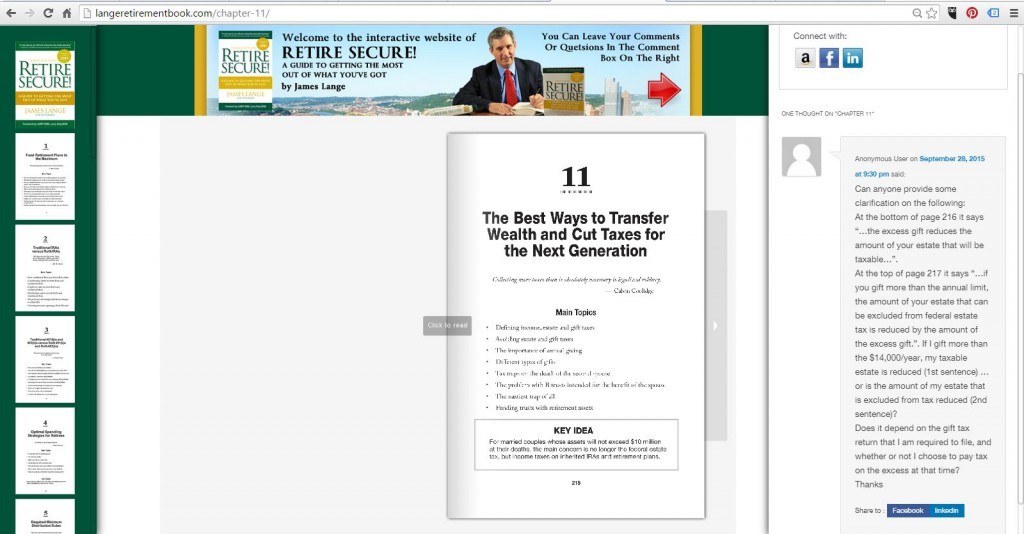


 Give Your Heirs as Much Flexibility as Possible
Give Your Heirs as Much Flexibility as Possible


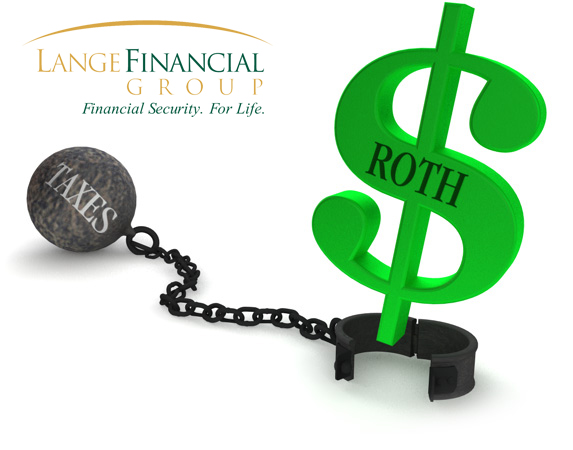 My wife recently told me that she didn’t think that there was anything that could keep me from blogging about my upcoming book, Retire Secure! While she was joking, she was also right, I thought. But then,
My wife recently told me that she didn’t think that there was anything that could keep me from blogging about my upcoming book, Retire Secure! While she was joking, she was also right, I thought. But then, 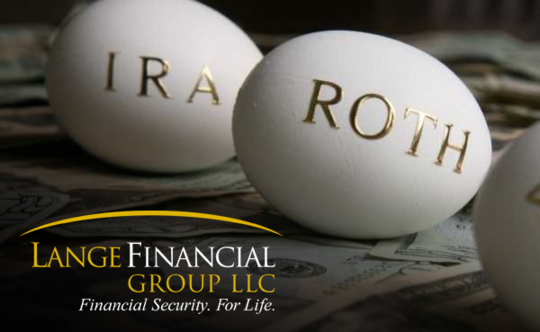 Earlier this year, President Obama announced that he wants to create new rules that give financial advisors a “fiduciary” status under the law. I welcome this wholeheartedly because a fiduciary is required to always put his clients’ interests ahead of his own. This means that a financial advisor cannot make investment recommendations based on the commission they would receive from the investment, and that they must first consider the benefits that would be received by their client. As a fee-based advisor I have always served as a fiduciary to my clients and believe that it is an immensely important role.
Earlier this year, President Obama announced that he wants to create new rules that give financial advisors a “fiduciary” status under the law. I welcome this wholeheartedly because a fiduciary is required to always put his clients’ interests ahead of his own. This means that a financial advisor cannot make investment recommendations based on the commission they would receive from the investment, and that they must first consider the benefits that would be received by their client. As a fee-based advisor I have always served as a fiduciary to my clients and believe that it is an immensely important role.